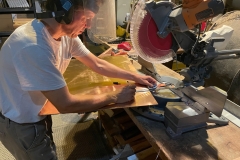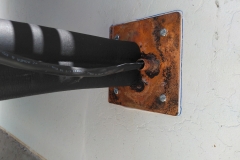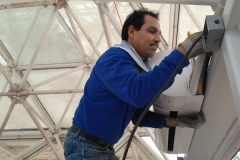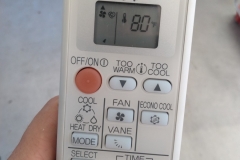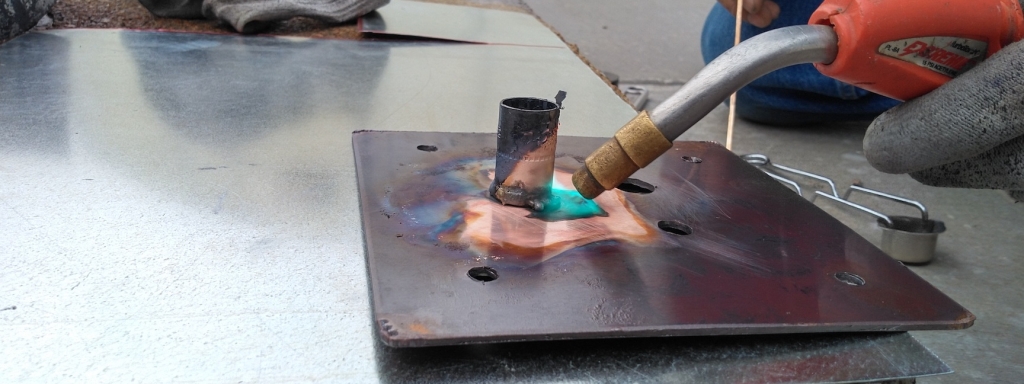
Heating and cooling the SAM Test Module (greenhouse) is paramount to the success of plant biology and food cultivar studies. Maintaining a relatively constant, controlled temperature and humidity is not easy in the context of the drastic changes in weather and conditions of the Arizona desert.
When the Test Module was first built, a separate room was required to produce hot or cold water which when pumped through a heat exchanger suspended from the interior space frame provided warm or cool air. That unit weighed a few thousand pounds and was removed piece by piece in the first few weeks of SAM effort, February 2021.
That system consumed massive amounts of electricity, likely more than 100 amps at full draw. The modern replacement, a mini-split heat pump, is far more energy efficient at just 15 amps maximum draw per condenser. What’s more, the interior air handler (sometimes referred to as the “head”) is not unlike that which could be used in an isolated, off-world habitat for it does not exchange air inside to out, rather, it recirculates air entirely internal to the controlled environment. Only the pressurized gas that exchanges the thermal energy from the condenser to the air handler moves through the wall, and in this case through a manifold that maintains the hermetic seal.
As the condenser at SAM does use a convective thermal exchange process (fan), it would not work as such on Mars for the atmosphere is too thin to conduct the heat away from the external unit. Instead, the condenser would pass the pressurized gas through a radiator likely composed of hair-like aluminum or copper filaments for maximum surface area and passive radiant thermal exchange.
The first unit was installed on June 26, 2021. This was operational for the 5-person, 4-hour test run. The second unit was installed on December 16, 2021 by the same team from AirQuest, based in Tucson, Arizona. Owner and president Aaron worked with Kai Staats for a few months prior to the first installation to calculate the required cooling and best placement of the units. As the software provided by the mini-split manufacturers does not anticipate an all glass construction at 24 feet tall, the upper reaches coated with a silicone elastomeric, a good bit of intuition and experience dictated the final design. Kai and Aaron co-designed the manifold which was then fabricated by Kai Staats and Heracio of the AirQuest team. The final product is air tight and highly efficient.


